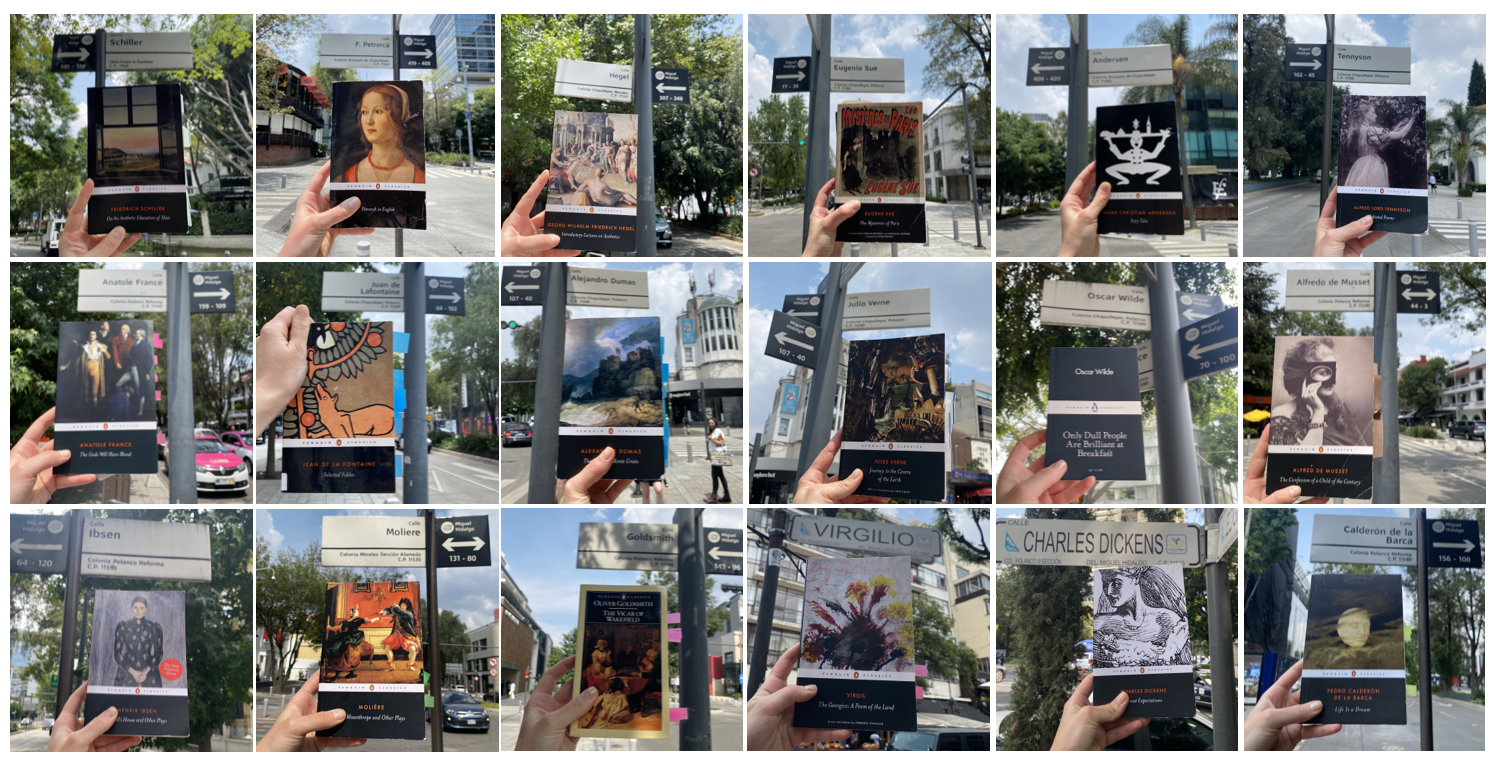How do you pick your next read? Do you get swayed by opinionated bestseller lists? Do you allow yourself to serendipitously stumble on the random read in the bookstore? Do you get persuaded by your erudite friend? Do you entrust yourself into the hands of data-bloated algorithms? While all of these methods are noteworthy means to navigate the repository of human knowledge, I want to recommend a more adventurous method - meandering the streets. You will have to make a pilgrimage to Polanco, a neighborhood of Mexico City, where streets are named after great poets and dramatists. They will guide you on a journey across world literature.
Start at the corner of leafy Schiller. Take slow and spacy steps. You will get to the large prospect of avenue Horacio where you will cross vivacious Lope de Vega, Hegel, Emerson, Lamartine. The traffic will pick up at Eugune Sue and Tennyson. Take zippy Alexander Dumas to Masaryk and you will find yourself in the heart of Polanco. The shopping crowd will industriously ramble through stores between Alfredo de Musset and La Fontane, almost mimicking social caricatures in the novels of both. If you get tired of storefronts, hide in an urban oasis by taking Julio Verne to Virgilio. Virgilio is lively, but with cafes instead of shops. Make your way to street Oscar Wilde, that just like the author is filled with a dashing crowd. Finish the literary tour by escaping to delightfully sleepy Charles Dickens. Residential Goldsmith and Ibsen will charm you. Your promenade just covered quite a few masters of world literature.
The literary streets of Mexico City have puzzled me since I have stumbled upon Oscar Wilde street on my first visit to the city. Alas, extensive googling could not produce an explanation of the curious street-naming conventions. Luckily, my well-read friend who calls this city his home, has suggested a book that would shed the light on the curiosity. Despite the suspicious title "In the shadow of the angel", I entrusted my curiosity into his hands.
And so I got acquineted with Antonieta Rivas Mercado. A bold, vivacious Mexican woman, who although unfamiliar to most, was quite a scandalous personality in the history of Mexico City. Her Wikipedia page is surprisingly brief, yet she has quite a list of contributions. The muse and patron of the young writers, artists, and musicians of the twenties she wiped the cultural life of Mexico City. I could not find the written confirmation on how Antonieta got to name the streets, but one can assume that since her father was a notable architect who designed the independence column in downtown Mexico City and since she stirred the city's intellectual life, she was the right candidate for the job of helping shape the rapidly developing city. There are multiple neighborhoods in Mexico City where the streets are thematically named after flowers, cities, US states, and rivers. When Lomas de Chapultepec neighborhood was being developed, Kathryn Blair, the author of the above-mentioned book, mentions that Antonieta was involved in giving the names to the streets. The neighborhood stretches from "Alpes" to "The Sierra Nevada" and from "Monte Altai" to "Monte Everest". But a more interesting denomination took place in Polanco, where she has chosen the put the writers and poets on the same pedestal as the usual street-worthy names of famous politicians and generals.
When the covid-19 pandemic began, I decided that there could not have been a better time to let Mexico City streets and Antonieta determine my reading list. I have used google maps to zoom into the parts of Polanco, trying to capture all of the authors and looking up their literary works. While some were familiar classics like Dumas and Anderson, some like Calderon de la Barca were personal discoveries. My literary journey let me revisit my childhood favorites like unbelievably farsighted science fiction novels by Jules Verne and savant fables by Jean de La Fontaine. I was forced to take on the classics by Francisco Petrarch and Fredrick Schiller that although heard of I have never actually read. And then there were new beautiful discoveries like Eugine Sue's "The Mysteries of Paris". The list was definitely skewing heavy Western literature, but somehow it was more fun and unexpected than the mandatory school curriculum. Without a doubt, this reading compendium reflects a specific view on writers, yet it allows one to get exposure to specific masterworks. Specific masterworks that a 20th-century intellectual should have been familiar with.
My reading order was unmethodical, but the look of my books was meticulously planned. I wanted my bookshelf to visually capture this bookish adventure, so I searched for uniform publisher book series that make one's library a pedantic look. I have settled on Penguin Classics for their spartan black spines and diverse range of works. And so as the pandemic progressed, so did my pile. Towering higher and higher it visually marked my virtual travel around Polanco.
With the introduction of vaccines, travel became less risky and I could travel to Mexico City. I neatly packed my stack, that corpulently occupied half of my suitcase. And so I walked the streets of Polanco. While the settings and architecture were new, I was exceptionally familiar with the street grid. Each turn of my walk reminded me of the plots and characters of the author who the street was named after. And I kept thinking about Antonieta, about the reasons for selecting books, about her tastes. I wondered if she wanted everyone walking on these streets to get inspiration to get familiar with the works of the subject.
And while few people would ever know about Antonieta or question the naming conventions of Polanco's streets, it feels extremely cool to tell a taxi driver: "Drop me on the corner of Moliere and Castellar".
